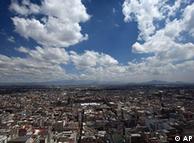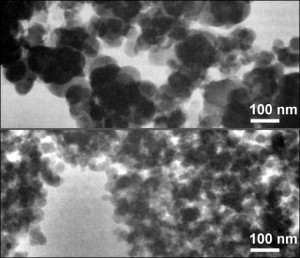Search Results for Tag: greenhouse gas
Soot as second worst greenhouse gas
Whenever your candle’s wick is too long, the lit candle produces something called soot. Soot consists of 80 to 95 percent carbon particles, which is why it’s also known as “black carbon”. Researchers have found that black carbon aerosols are actually twice as harmful to the climate as previously thought; in fact, soot is now as the second worst greenhouse gas after CO2.
But of course, it’s not the few candles in your home that are sparking global warming. Scientists trace the damaging effects mainly back to burnt wood and coal in industry and private households. Apart from savanna and bush fires, traditional, simple fires for cooking are the main source of black carbon emissions, researchers say. Another major source are diesel engines that don’t have particle filters.
Black carbon can scatter in the air and land on earth’s surface. It absorbs or disperses sunlight and thereby influences cloud formation and accelerates the melting of snow and ice.
In contrast to CO2, it’s more difficult to evaluate the consequences of black carbon emission because its effect varies depending on air circulation and humidity.
Despite that uncertainty, scientists are confident that climate change could be slowed down by reducing black carbon. They believe it would be possible to reduce global warming by half a degree.
But it’s not only the climate that would gain from slashing black carbon emissions. People’s health would also benefit – diesel smoke, for example, has been linked to lung cancer.
Yet cutting back on black carbon is easier said than done. Most emissions are generated in less developed regions, where the technology needed to avoid or reduce emissions are simply not yet available on a large scale.
Breakdown: tackling climate change

Restrictions on driving and industry have helped to reduce emissions in Mexico City.
A lot of experts and analysts in the field of climate change say 2012 is a key year in the battle against global warming. Coming off the heels of Durban, many believe this will be the year to prove that the world is ready to take the next step forward – especially with significant parts of the Kyoto Protocol set to expire by the end of the year.
But to move forward, it’s important to know exactly where we stand! National Public Radio (NPR) in the United States recently featured a great breakdown on what the world’s political powers – and some of the biggest polluters – are doing to fight climate change in their respective countries. According to the article, the many of the biggest greenhouse gas emitters have already set goals on a national level to slash harmful emissions. Because there has been little progress on the international level, they have decided to move forward at home.
Those national goals include things like putting a stop to deforestation, investing more in clean, renewable energy sources and working with cap-and-trade policies to curb emissions. If you live in one of the listed countries, take a look at what your government is doing to fight climate change…and if not, let us know!







Feedback